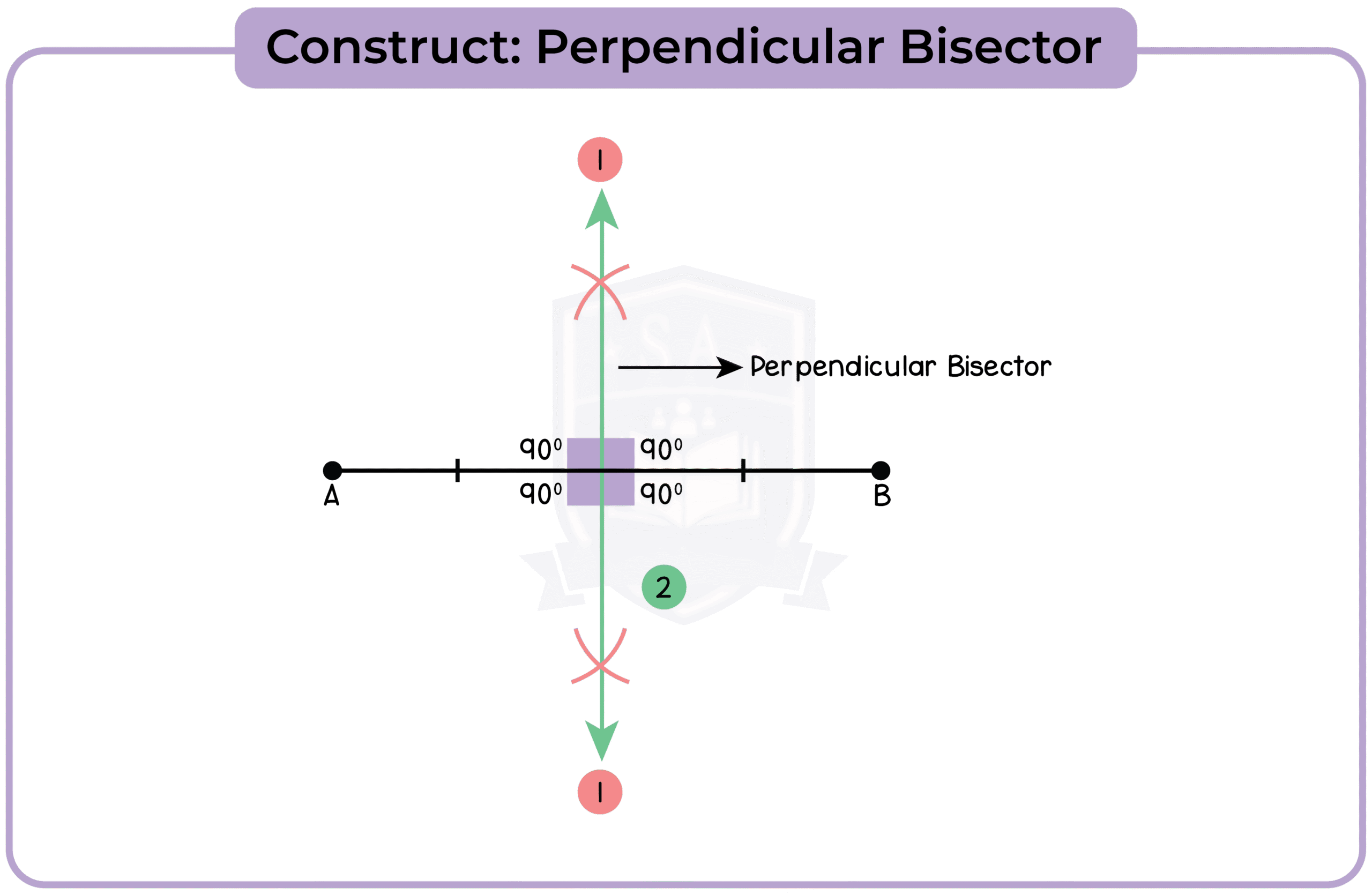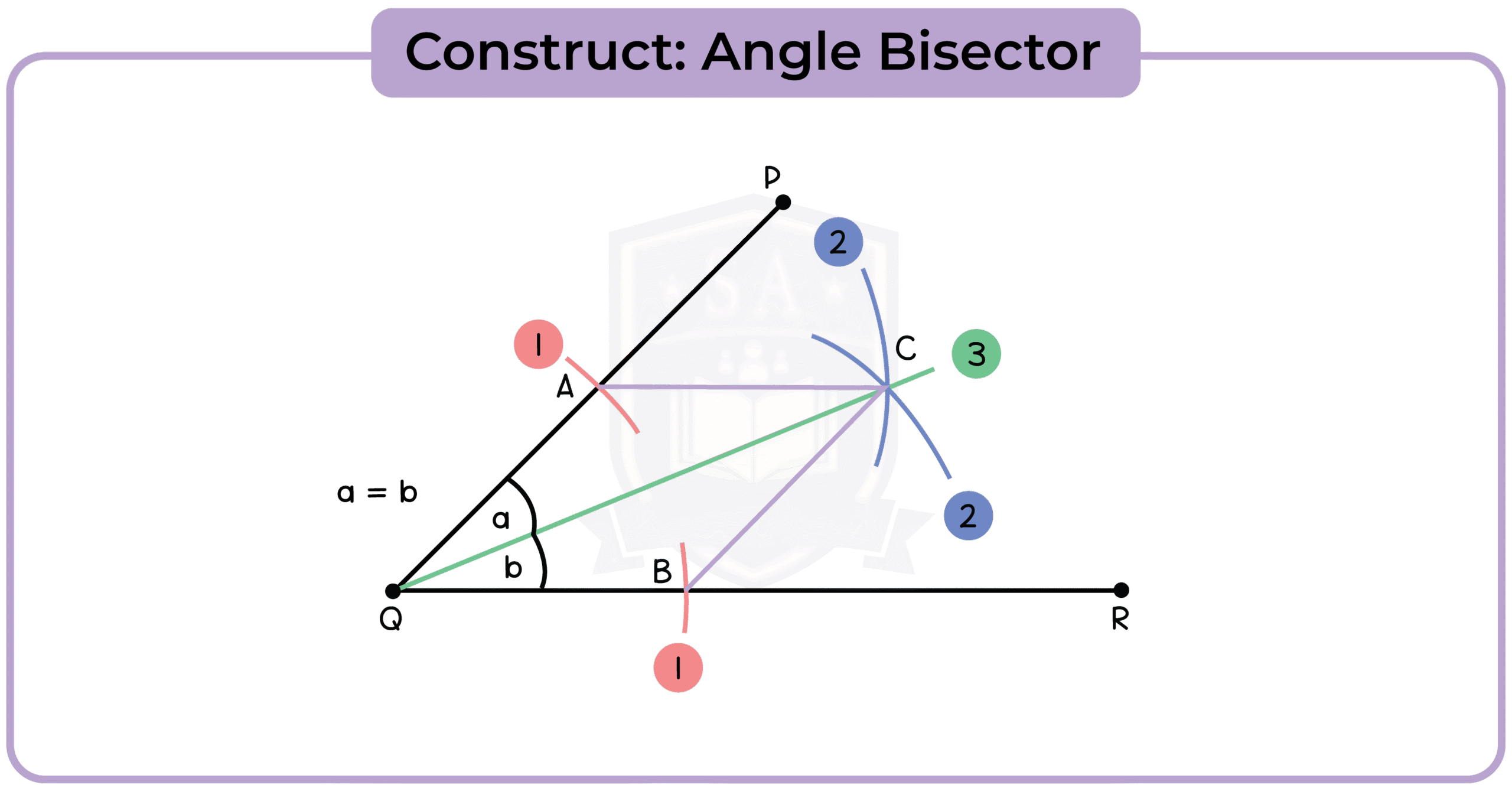Studia will be closed for Christmas and NYE.
(i) construct the perpendicular bisector of a line segment
Step 1: Open the compasses to more than half the distance from A to B.
Step 2: Draw two arcs with centre A.
Step 3: Draw two arcs with centre B.
Step 4: Use a straight edge to complete the construction.
(ii) construct the bisector of an angle
Step 1: Using compasses, draw an arc with centre O, so it cuts one of the original lines. Call this point A.
Step 2: Without changing the compass setting, construct a second arc with centre O, to cut the other line at B.
Step 3: Construct two further arcs with centres A and B.
Step 4: Complete the construction by drawing a straight line from O to the point of intersection.